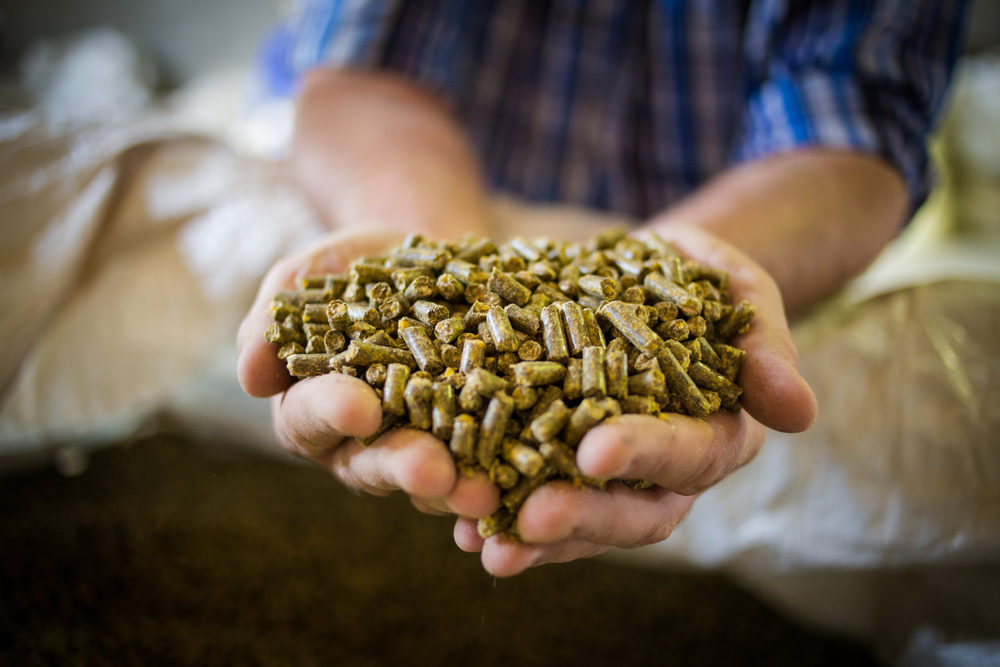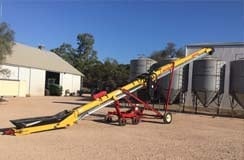Many factories and warehouses rely on front end loaders and manual handling to move dry bulk commodities into containers, ships or semi-trailers.
These methods can be time-consuming, labour intensive and, in the case of manual handling, pose certain safety hazards to workers.
But there is a much more efficient solution available for processing dry bulk commodities from one point to another.
Contrary to popular belief, grain conveyors (AKA belt conveyors) can be used for much more than just handling grain. These advanced pieces of equipment are extremely well-suited to moving dry bulk commodities such as;
- Protein meal
- Fertilizer
- PVC
- Saw dust
- Plastic chips
- Soil/potting mix
- Salt
- Fish food
- Rice
- Pellets of all kinds
- Sand
This list could go on and on. There really isn’t a dry bulk commodity that couldn’t be easily handled by a grain conveyor.
Benefits of Using a Conveyor for Handling Dry Bulk Commodities
Increased Productivity
As grain conveyors have been designed primarily for the farming industry, they move things A well-designed conveyor can have a processing capacity of 0.15 tonne (150kg) an hour up to 500 tonnes (500,000kg) an hour. With such fast processing possible, bottlenecks are reduced, operations run much more quickly and cost-savings are achieved.
Less Dust
Using front loaders and manual handling to move around commodities can result in large amounts of dust being released into the air, and this in turn can result in council fines. Conveyors virtually eliminate dust being generated during handling as the dust remains contained within the belt tube.
Safety
Conveyors are definitely a safer option compared to manual handling in situations where workers would have to lug heavy bags in sweltering and dusty warehouses. Provided the correct safety features are always in place and the equipment is used as intended, conveyors are very safe pieces of equipment in industrial settings.
Less Damage to Goods
By design, conveyors minimise impact damage to commodities during high capacity handling, so they are especially beneficial when handling valuable/fragile goods.
Less Maintenance
Grain conveyors are designed to withstand the rigors of corporate farming, so they are built tough and engineered from the ground up for a long service life. High quality conveyors feature premium rubber belting with nylon backing to greatly reduce tube wear and friction. Industrial quality bearings are used on each roller to always guarantee correct tension and alignment. These features greatly reduce maintenance costs.
Logistics of Using a Grain Conveyor in a Warehouse or Factory
Grain conveyors are well-suited to warehouse and factory environments as they can be easily moved around with a forklift or a specially designed self-propelled kit which allows for easy steering and positioning.
Conveyors are powered by either electric or petrol motors. Electric models tend to be more suited to industrial applications because of workplace requirements.
Fitting a conveyor inside a warehouse or factory is usually quite achievable as they are available in a range of lengths from as small as 5m (16 feet) up to 36.5m (120 feet) and heights of up to 12m (39 feet).
Longer conveyors can be constructed on-site, whilst shorter models can be delivered pre-assembled and then installed where required.
Want to learn more about using a grain conveyor in your warehouse or factory? Talk to the experts at Westfield Augers
Over the years, we have worked with many manufacturers and helped to provide conveying solutions for a range of dry bulk commodities including pet food, rice and wood chips.
Simply click here to get in touch with the friendly team at Westfield Augers.







